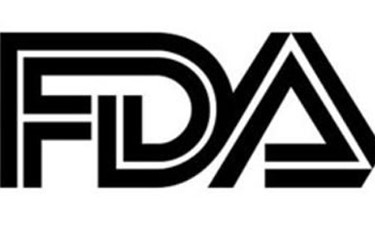FDA Hopes To Advance Clinical Testing To Deliver New Cures

By Ed Miseta, Chief Editor, Clinical Leader

There’s no question we are on the verge of a golden age of drug discovery. Cancers that were a death sentence 20 years ago are being stymied and presenting patients with a life that is disease free. Genomic therapies are now coming to fruition, and precision drug approvals are finally providing meaningful benefits to patients. These treatments are being aided by biomarkers, which assist researchers in recognizing safety and efficacy signals in targeted populations.
As a result of these advances, the FDA states 2018 was a year of records. This past year, the pharmaceutical industry saw an unprecedented rate of approvals of more targeted medicines. The FDA attributes the success of drug developers to the ability of researchers to unlock the molecular basis of disease. New genetic and genomic tests allow researchers to see human genomics at work in diseases such as cancer.
The FDA cites lung cancer as one example. There used to be two large subtypes of lung cancer. Today, however, the disease is broken into dozens of rare diseases. While these genetic variants individually might only account for one percent to two percent of patients, collectively they account for more than 50 percent of lung cancers.
These advancements are not just happening in oncology. Advances in diagnostic technology are also improving the ability of researchers to treat infectious, hereditary, and rare diseases.
The News Is Not All Good
Still, there is a problem. The FDA notes new diagnostic tests that undergo rigorous FDA review must demonstrate they are analytically and clinically valid. Unfortunately, the majority of laboratory developed tests (LDTs) currently do not demonstrate to FDA that they meet those standards.
In a paper posted to FDA Voices, FDA Commissioner Scott Gottlieb, Jeff Shuren, director of the Center for Devices and Radiological Health, and Lauren Silvis, chief of staff to Gottlieb, lay out the problem.
“This lack of standardization between FDA-reviewed tests and LDTs with respect to the demonstration of analytical validation and clinical evidence needed before a test is offered to patients is concerning considering the critical role diagnostics play in advancing our ability to discover and develop new cures for disease and advance the proper use of new drugs patients,” states the missive. “There’s also a striking lack of transparency about the performance of the laboratory tests that are being used today to drive treatment decisions.”
The paper goes on to state that the current paradigm for clinical testing leads to questions about the accuracy and reliability of certain diagnostic tests. This disparity can impact the willingness of investors to put money into tests that meet the FDA’s standard, especially when they have to compete with LDTs that are not FDA-reviewed. Coverage decisions of payors and patient access to treatments can also be impacted.
A New Approach Is Needed
The FDA recognizes that a new approach is necessary, and is supporting a new path that is intended to do the following:
- Focus review resources where they will do the most good and where the risk is highest;
- Provide strong postmarket authorities to protect patients from harm;
- Require transparency about test performance and limitations;
- Complement rather than duplicate laboratory certifications;
- Incorporate third-party review and inspection; and
- Include a pathway for earlier patient access to breakthrough technologies.
According to the agency, it has been proactive on this subject and have already shared ideas with Congress, patient groups, providers, professional societies, and the test developers. Additionally, FDA is reviewing a more efficient allocation of the agency’s resources that would only require around 10 percent of tests to need individual premarket review. Those tests requiring review would be those that are novel, higher-risk, marketed directly to consumers, used at home, or cross-labeled for use with a drug or other therapeutic product. The review would focus on the analytical and clinical validity of the tests and unique issue they might present.
A More Efficient Process
For 40 percent to 50 percent of tests, the FDA believes a pre-certification type of program would ensure analytical and clinical validity. This approach would protect patients from false or misleading test results while promoting innovation. This approach will also all the agency to evaluate a developer and its ability to design and validate a test, so that a review of each test might not be needed.
Other tests could be exempted from pre-market review if coupled with appropriate provisions that allow the agency to act against problematic tests that might harm patients. Those tests include those which are manual, low risk, custom, low volume, forensic, or for rare diseases. Tests currently offered by labs could be grandfathered and would only require review under certain circumstances, such as a significant change or a safety issue.
Finally, FDA believes that transparency will be a critical component of this proposed path forward. The agency believes all stakeholders should have access to information on about test developer offerings, performance, claims, regulatory status, and adverse events associated with the tests. Many patients are not aware of the universe of tests that drive healthcare decisions. Moving forward, this path should empower them with information about these tests to better guide their decision.
